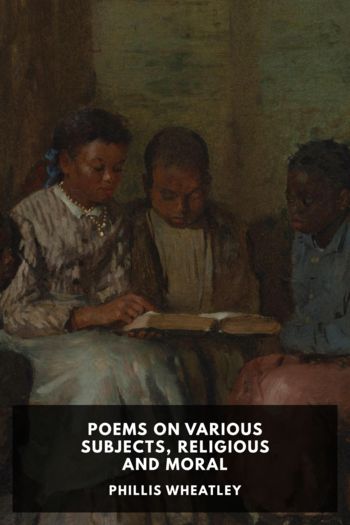Malaria and Rome: A History of Malaria in Ancient Italy, Robert Sallares [reading a book TXT] 📗

- Author: Robert Sallares
Book online «Malaria and Rome: A History of Malaria in Ancient Italy, Robert Sallares [reading a book TXT] 📗». Author Robert Sallares
Ecology of malaria
107
18. The northern slopes of Monte Circeo, with the forest of the Quarto Freddo, viewed from near Torre Paola.
simply an isolated part of the Apennines. It is not now thought to have ever been an island during the Holocene period, but there is no doubt that there was substantial alluviation in the adjoining Pontine plain in classical antiquity.¹⁶¹ The promontory of Circeii had dense forests of oak, bay, and myrtle. The remnants of the Pontine forest are still visible on the northern slopes of Mt. Circeo itself and in the adjacent Selva del Circeo in the Parco Nazionale del Circeo.¹⁶² Strabo (quoted in Ch. 6 below) shows that the area of the Pontine Marshes in the vicinity of Monte Circeo was severely affected by malaria, although Monte Circeo itself was above the range of malaria in the past, since it reaches an altitude of 541
metres above sea level. Doni regarded Mt. Circeo as healthy in the ¹⁶¹ The Dutch archaeologists from Groningen identified one specific episode of alluviation (Attema et al. (1999) ). They found evidence for a mass mud flow from the valley of Vado La Mola into the Pontine plain, near the important proto-historic settlement of Caracupa Valvisciolo near Sermoneta. They attributed this mud flow to ‘vegetational denudation of hillslopes’.
¹⁶² Ovid, Metamorphoses 15.716–17 described Circeii as surrounded by marshes. Pliny, NH
3.5.57–8 simply followed Theophrastus’ account of Circeii, cf. Procopius, BG 1.11.2–4. Pliny, NH 19.40.134 said that the beets of Circeii were particularly noteworthy. [Aristotle,] peri thaumasion akousmaton 78.835b–6a believed that a deadly plant-derived drug could be obtained at Circeii. Pratesi and Tassi (1977: 145–8) and Stanisci et al. (1998) described the forests of Circeii as they are today.
108
Ecology of malaria
seventeenth century, while Martial described Terracina as healthy in antiquity. Demetrius used to hunt wild boar in the forests of Circeii.¹⁶³
By the Late Republic the expansion of the city of Rome required very large quantities of timber for construction and other purposes.
Strabo states that the wood for buildings in Rome came mainly from Etruria. It was transported along the Tiber and its numerous tributaries to the city. Pliny noted that the Tiber had forty-two tributaries below its junction with the Chiana. Strabo also mentions the region of Pisa as providing timber for buildings at Rome and for shipbuilding. Rusellae, near Grosseto, was one of the towns which offered timber for shipbuilding to Scipio Africanus in 205 for his expedition to Africa. Another cause of deforestation was the requirement for firewood for smelting metals (e.g. around Populonia and in the Colline Metallifere).¹⁶⁴ The breaking up of previously closed forest environments in the lowlands favoured Anopheles mosquitoes, some species of which prefer pools of water that are exposed to sunlight for breeding purposes. In the early eighteenth century Lancisi observed that stagnant waters, which faced the open sky in summer, were particularly dangerous; such waters had lots of insects and abundant vegetation (which provides cover for mosquito larvae). A. sacharovi particularly likes inland waters which are open to sunlight in summer. Lancisi attempted to prove his observations by practical experiments:
It is impossible to ignore the fact that in summer rainwater kept in an open vase becomes polluted with mosquitoes far more quickly and abundantly than anything else.¹⁶⁵
¹⁶³ Doni (1667: 104); Martial 5.1; Polybius 31.14.2–3, ed. Buettner-Wobst.
¹⁶⁴ Strabo 5.2.5.222–3C; Pliny, NH 3.5.53–4; A. Betocchi, Del fiume Tevere, in Monografia (1881: 206–7) listed the tributaries of the Tiber; Livy 28.45.18 on Rusellae; Sallares (1995) and various papers in Frenzel (1994) considered deforestation in antiquity. The demands of ‘industry’ for timber in the past should not be underestimated. De Felice (1965: 86) gives interesting statistics, which can be scaled upwards for antiquity, about the consumption of charcoal by craft industries in the city of Rome in the eighteenth century, when the city’s population was much smaller than during the Roman Empire: ‘ la sola città di Roma consumava annualmente 12 milioni circa di kg di carbone’. Meiggs (1982: 218–59) discussed the timber requirements of the city of Rome in antiquity and emphasized the need for charcoal for heating, industry, cremations, and hot water in the public baths, cf. Rausing (1987). Toynbee (1965: ii. 585–99) is still interesting on the question of deforestation.
¹⁶⁵ Lancisi (1717: 58–9, cf. 26–9): neque vero hic dissimulandum est, aquam pluviam per aestatem, si aperto in vase detineatur, culicibus longe citius, et copiosus quam quaevis alia foedari. Tommasi-Crudeli (1881 b) wrote a short article about plant pots inside the house as a





Comments (0)